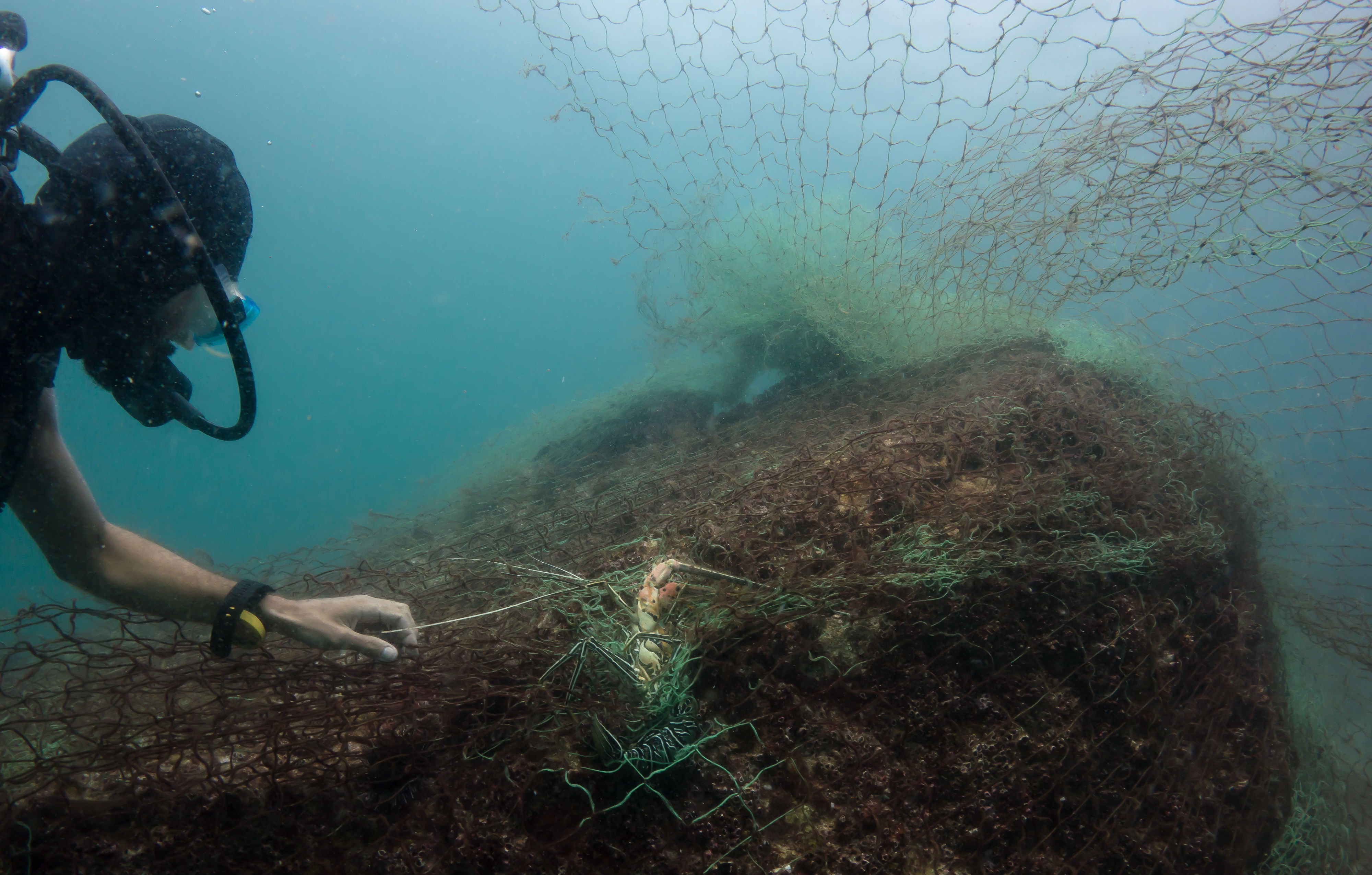Ghost Gear Haunts Myanmar
Published by Ocean Conservancy
The islands of Myanmar are home to lush mangroves, colorful coral reefs and a number of threatened species including manta rays, dugongs and sea turtles. Some of the more remote islands, including those in the Myeik Archipelago, are largely untouched by humans—or, so it seems.
Beneath the surface lurks a massive threat to Myanmar’s marine ecosystems. Ghost gear, or fishing gear that has been lost or discarded, can trap and kill ocean species and smother underwater habitats. Ghost gear lingers in the ecosystem long after it has been discarded, creating long-term impacts on the marine environment.
The good news? People are hard at work trying to protect Myanmar’s ocean ecosystems from this deadly threat. The Global Ghost Gear Initiative has partnered with National Geographic, Ocean Conservancy, World Animal Protection and the Myanmar Ocean Project to launch a ghost gear removal project that is the first of its kind in Myanmar. The project aims to assess the scope of the problem, train SCUBA divers to safely remove ghost gear, and conduct outreach to local fishers and divers to raise awareness about the initiative.
Thanda Ko Gyi of the Myanmar Ocean Project and her team completed the first phase of the project last month, where they traveled to three sites in the Myeik Archipelago to assess ghost gear prevalence.


In Langann, their first site, the team was unprepared for what they discovered. Ghost nets were everywhere—monofilament gillnets covered coral reefs, likely because it is close to where boats come to fill up on supplies. The team removed 1,162 pounds over four days of diving, but there is still a vast amount of lost net to be recovered. Fortunately, local artisanal fishers on the island were engaged in the project and eager to help, which left the team feeling hopeful for the future of the island.
Their second site, High Rock, is a popular dive destination that features towering rock pinnacles. One of the iconic rock spires had four separate layers of net covering the rock, indicating at least four distinct major snag events. The strong currents and deep water in the area slowed removal efforts, but the team managed to recover 767 pounds of net from the spire over nine dives across two days. Despite their efforts, there remains a significant amount of net to be removed.
Their last site, Lampi, was remarkably free from nets, likely because the area has been designated as a national park since 1995. Although this was certainly encouraging, once the team left the marine park boundaries, there was a correspondingly high concentration of lost gillnets and removed 306 pounds over a day and a half of diving.
The first round of the project confirmed there is certainly a major problem with lost and abandoned fishing gear in the Myeik Archipelago. However, the enthusiasm of local fishers was encouraging—most fishers were unaware of the extent of the impacts of lost gear on the local species and their own livelihoods, and were eager to engage with the team and find ways to help mitigate the problem.
Follow along with the Myanmar Ocean Project on the Global Ghost Gear Initiative website.
Sign up for our emails!
The post Ghost Gear Haunts Myanmar appeared first on Ocean Conservancy.
Read the full article at: https://oceanconservancy.org/blog/2019/05/02/ghost-gear-haunts-myanmar/


